Radio development continued after the end of the First World War, as transmitters became more powerful, receivers became more sensitive, antennas became smaller and everything became lighter and more reliable. As such, radio found new applications and became more vital than ever before.
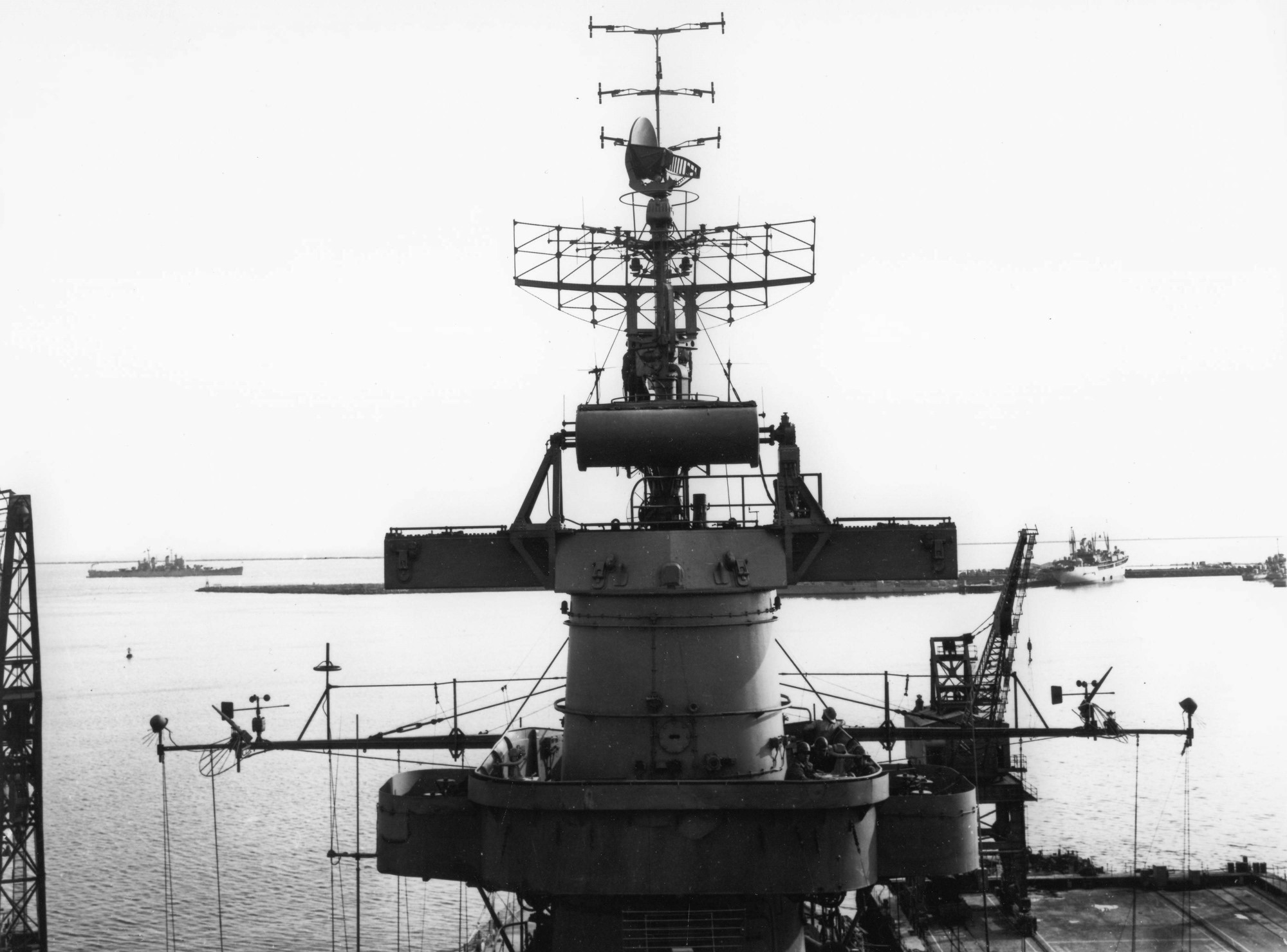
Iowa shows her antennas in the 1950s
During the interwar years, vacuum tubes had won out over all other systems for generating radio signals, and they allowed higher frequencies than had been normal during WWI. These bands were known as high frequency (HF), and they could be efficiently transmitted with much smaller antennas. HF radio could also take advantage of skywave propagation, where signals bounced off the ionosphere and could travel thousands of miles. Low and medium frequency signals traveled primarily via groundwave, which was absorbed as it propagated, and thus could not reach nearly as far.
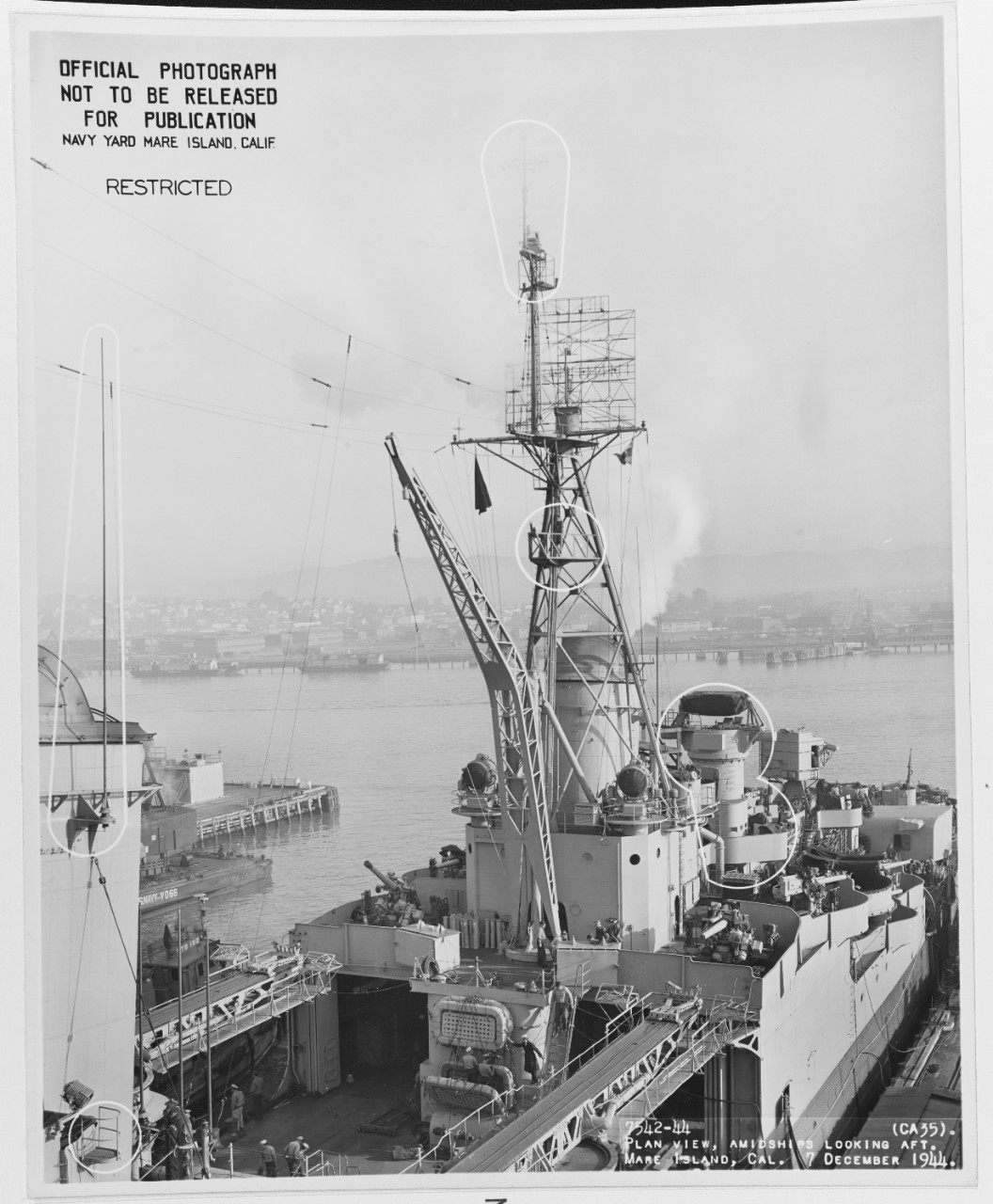
Radio antennas on Indianapolis
Unfortunately, skywave propagation had serious drawbacks as well as benefits. Because signals could travel long distances, they were easy for enemies to intercept and use against their originators. Even lowering the power on the transmitter couldn't solve this, because HF waves could take surprising paths, sometimes being picked up clearly halfway around the world. This same effect could also garble messages or even keep ships that were well within the nominal range of the transmitter from picking anything up at all. The solution, devised just as war broke out and enabled by advancements in vacuum tubes, was to push the frequency even higher, into the imaginatively-named very high frequency (VHF) band. VHF doesn't propagate via either skywave or groundwave, and while it does bend slightly, it usually doesn't travel past 100 nm or so.1 As a result, VHF was adopted for tactical communication, often being used in place of signal flags or lights.
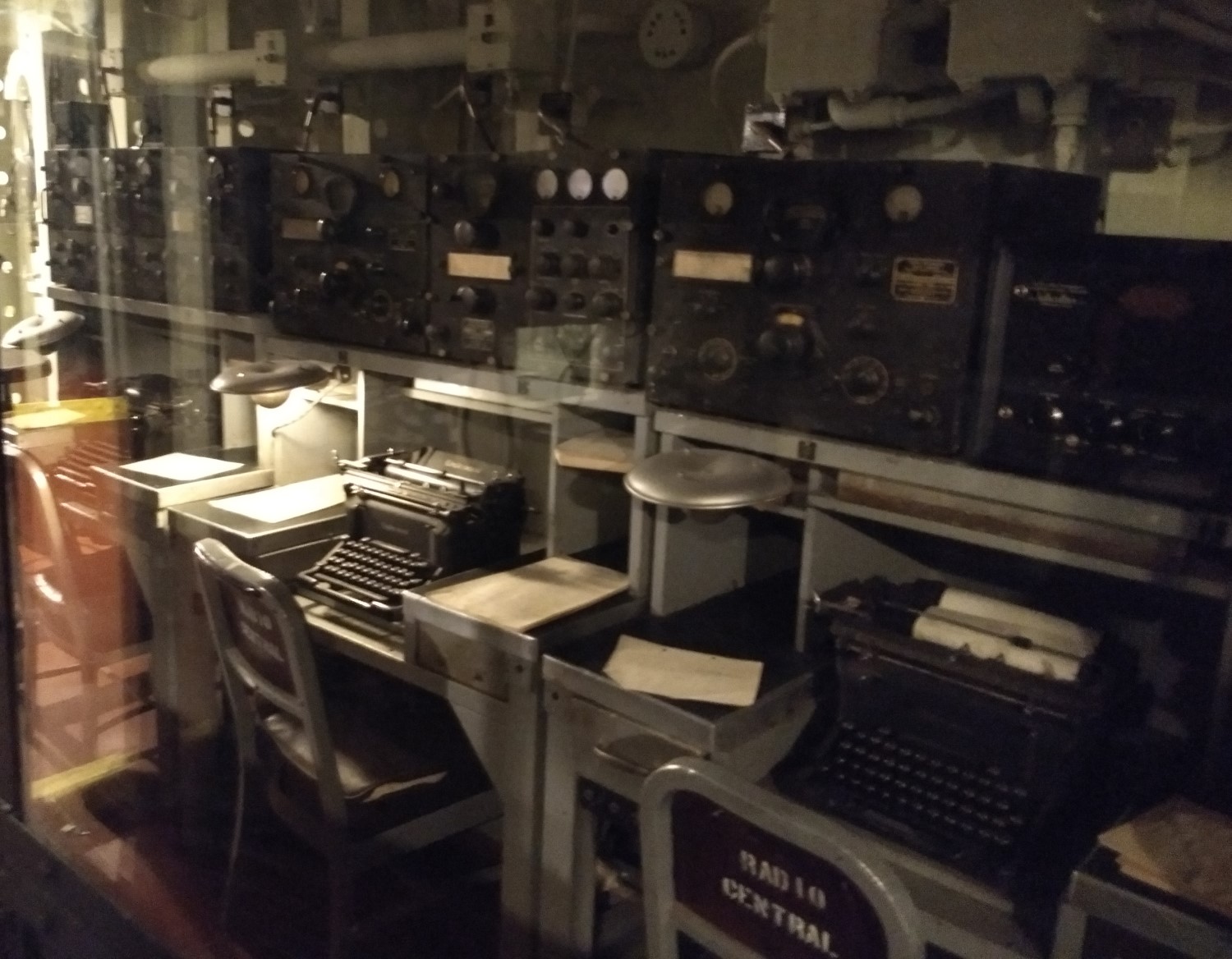
The radio room on Massachusetts2
The other big problem of using radio for tactical communications was lag. Even if messages were transmitted under only a very light encryption, intended only to thwart tactical intercepts, it still took time to pass the message down to the radio room, encode it, send it, then decode it and take it to the bridge on the other end. For fast-moving battles, something quicker was needed, and it came in the form of bridge-to-bridge voice radio. This system, known as TBS,3 was a tremendous success, although its ease of use meant that officers tended to clutter up the airwaves with irrelevant chatter. Despite this problem, TBS revolutionized radio coordination of groups of ships, particularly for situations like anti-submarine warfare where tight coordination was needed. In fact, the first bridge-to-bridge radio had been introduced for this purpose in the form of the CW 936 radiotelephone, a device the Americans installed on numerous subchasers in the closing days of WWI.
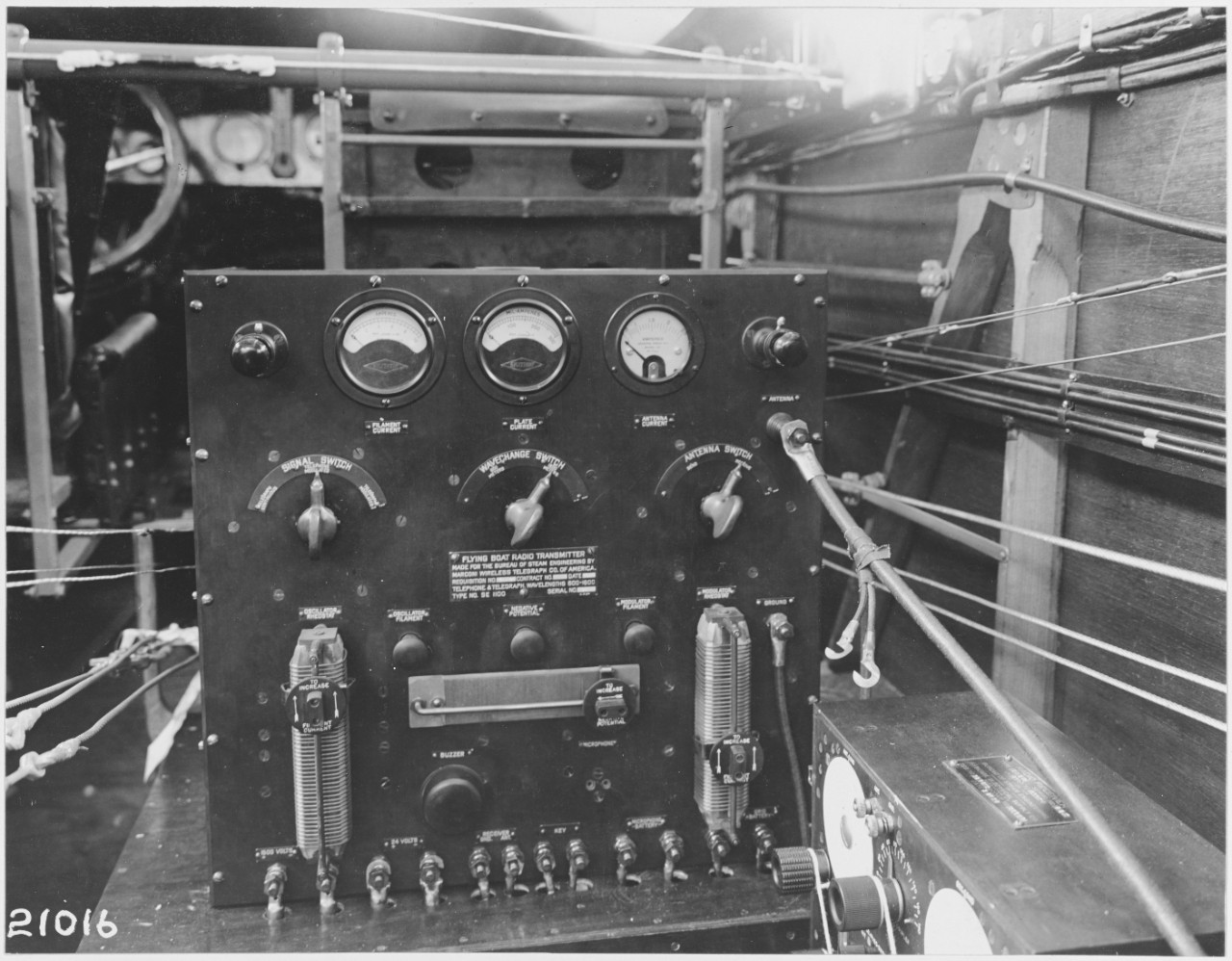
A WWI aircraft radio transmitter
Aircraft radio was another technology that was pioneered during WWI and perfected during WWII. Initially, it was used primarily for gunfire spotting, and only worked on the sharply restricted power and weight available in an aircraft thanks to the use of an antenna trailing behind the aircraft. This had to be manually wound in and out, and if the winch jammed, landing with 50' or more of wire hanging out wasn't fun. Some aircraft were fitted only with transmitters, and receivers had to be shielded against interference from the aircraft's ignition system.
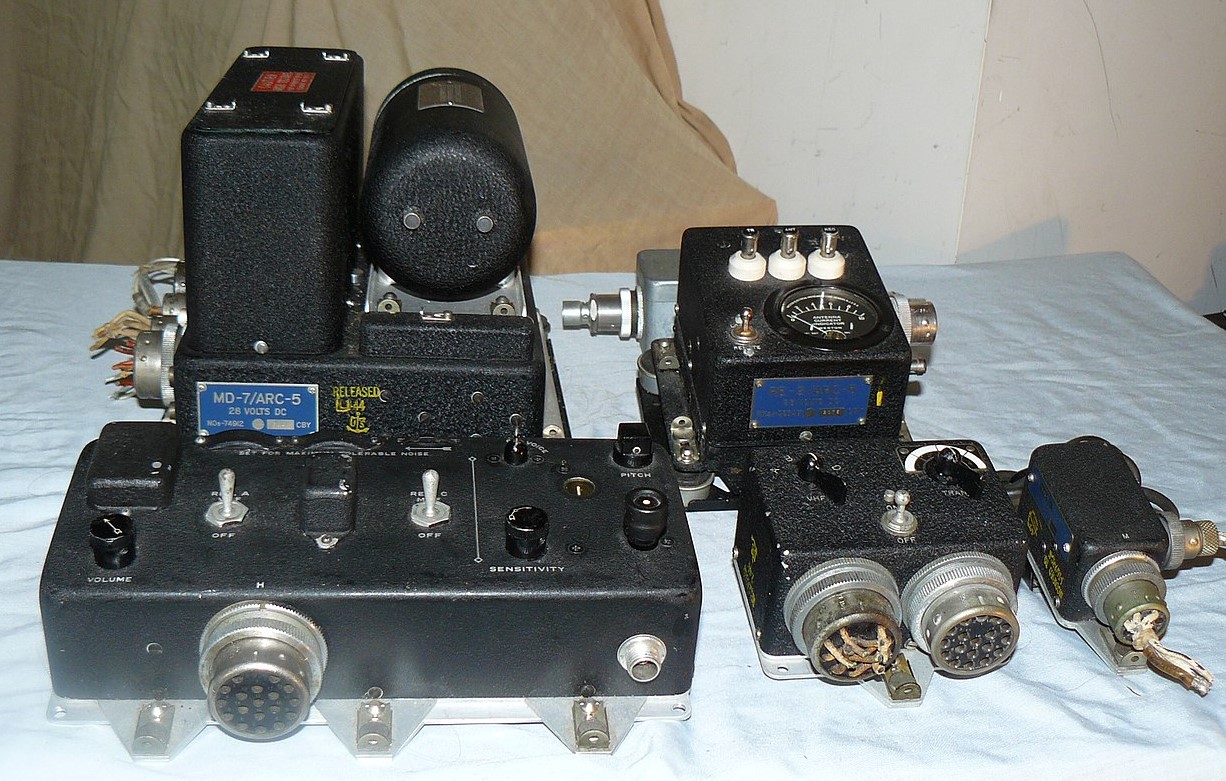
AN/ARC-5
By WWII, voice radio had matured to the point that almost all aircraft, even single-seat fighters, carried one as the pilot could now serve as his own radio operator. This was necessary because of the increasing speed of aircraft, which had previously been slow enough for pilots to see most problems and react in time. Increasingly sophisticated communications protocols meant that pilots had to monitor multiple radio nets at the same time, a need supported by sets like the AN/ARC-5. A typical pilot might have to listen to traffic from the fleet's fighter directors; the general air net, only transmitted on by the leaders of groups of airplanes; the group net, which he could talk on; and the net for air-traffic control.
However, these VHF voice radios were not enough for the sort of long-distance communication required of scout aircraft, so these mostly retained HF radios with designated operators, who could transmit in Morse and hopefully fix the radio if it broke, as it often did. Improved radios and antennas meant that trailing antennas were generally not necessary, with most aircraft having a long antenna between the fuselage and the top of the tail.
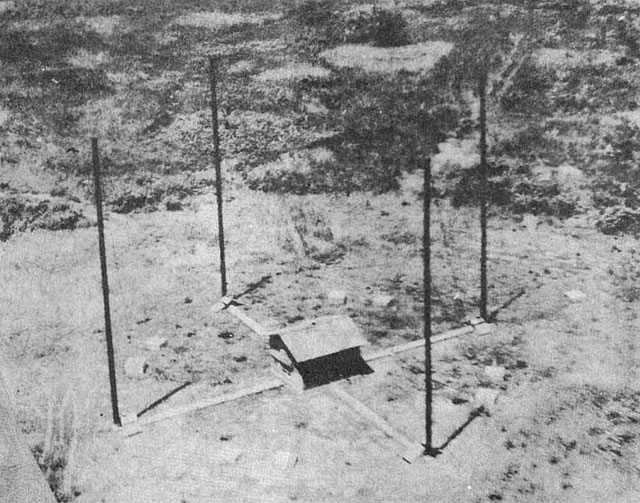
A Japanese Adcock direction-finding antenna on Rabaul
The increasing importance of radio during the war came with an increase in the importance of intercepted radio communications. The tales of Ultra and the US use of codebreaking at Midway are justly famous, but even when the codes held up, traffic analysis and direction-finding continued to play a vital role. This was best illustrated by the British Operational Intelligence Center, which was able to make accurate predictions of what U-boats were doing even when Bletchley Park couldn't read the messages at all.
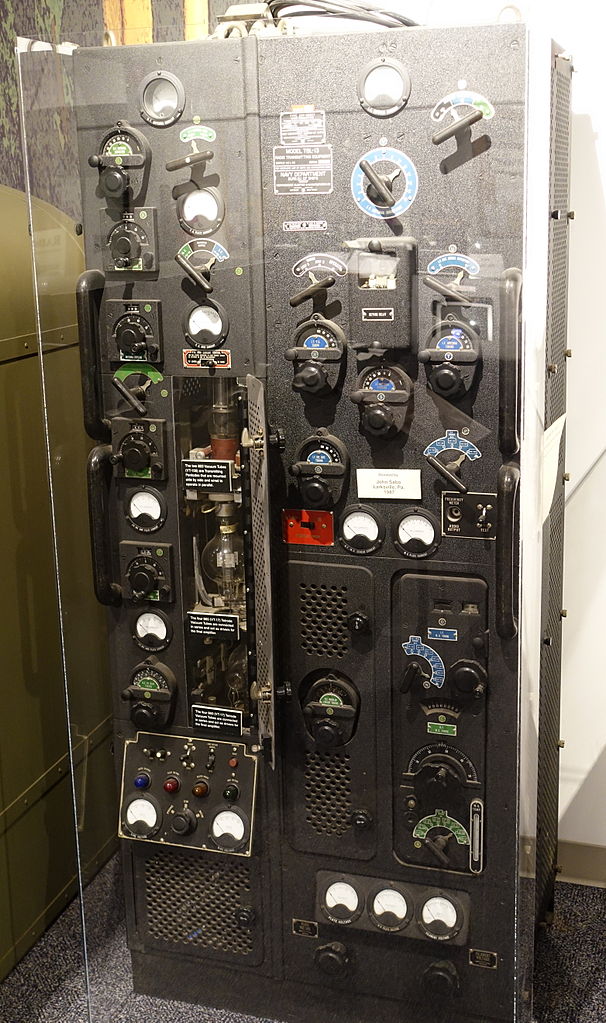
A TBL-13 radio
While shore-based radio stations were obviously not particularly worried about direction-finding, traffic analysis could still reveal a great deal about the fleet at sea. To frustrate such efforts, and to deal with the flood of messages resulting from a global war, the USN and RN instituted the fleet broadcast. Under this system, all strategic messages were sent out by a network of shore transmitters that broadcast more or less continuously, and which all ships at sea monitored, but didn't reply to with confirmation of receiving the message. Because of this, it was known as the "no receipt" system in the USN, which gave each message a serial number to reduce the risk of a unit missing a message. The message headings were enciphered to make traffic analysis even more difficult, and ships would only decrypt the messages that were relevant to them. At the height of the war, the RN had 18 different regions for its broadcast, which was so busy that senior officers were asked not to save messages for the end of the day to avoid creating a jam.
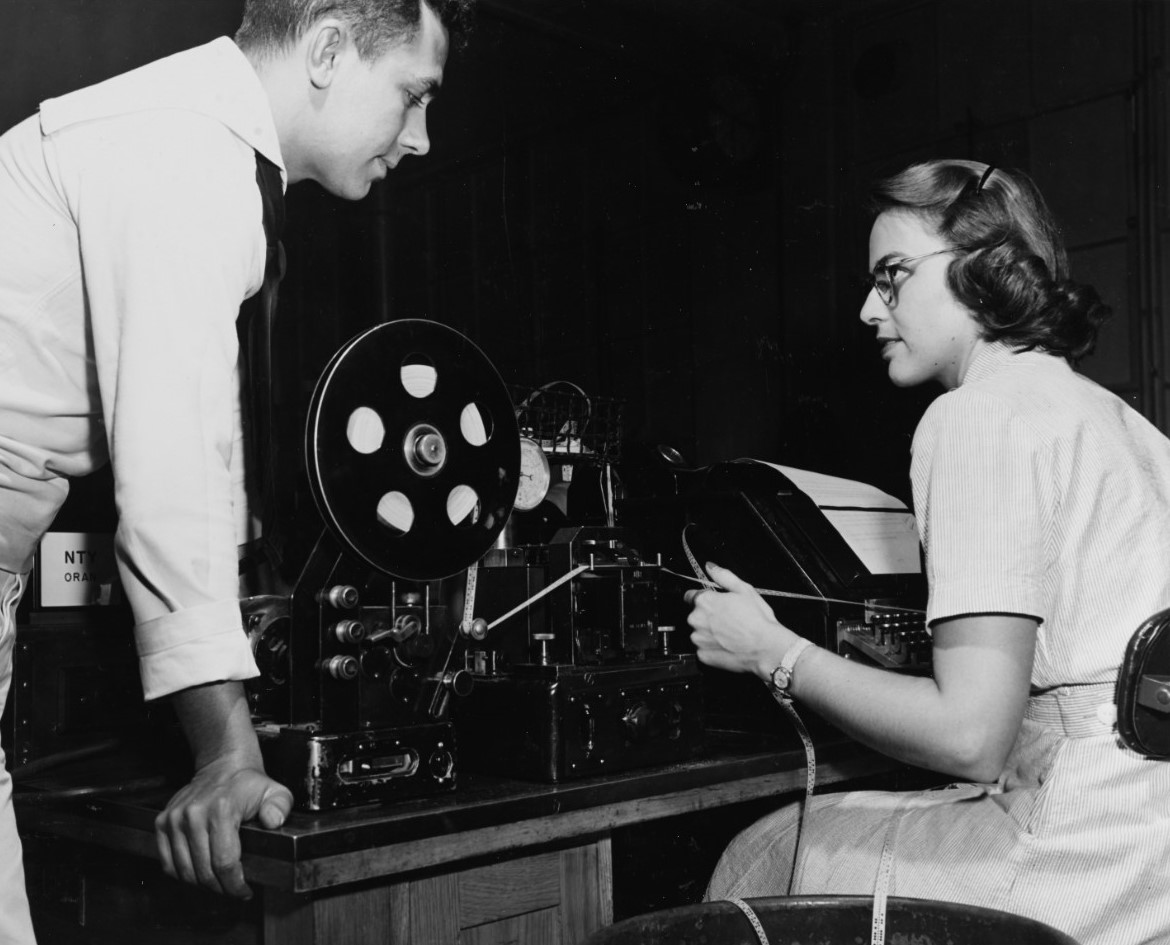
A WAVE operates a shore-based radio transmitter
One other important factor for traffic analysis was the "fist" of the radioman of a specific ship or station. Most messages were still sent by hand, and an experienced listener could tell senders apart. Both sides were aware of this, and took some pains to reduce the vulnerability. One American radioman who had sent a message to the Soviets in the clear in the immediate aftermath of the war was ordered to use his left hand from then on. Another option was mechanization. The USN began to make use of radioteletype, a system that transmits messages that have been pre-recorded onto paper tape and prints them out on the other end, in 1944. This reduced the need for skilled operators and increased transmission speed substantially. The Germans, in an effort to frustrate Huff-Duff direction-finding, developed a system known as Kurier, which could transmit a message in around a quarter-second, as opposed to approximately 20 seconds for a normal message. Fortunately for the Allies, the war ended before it could be deployed.
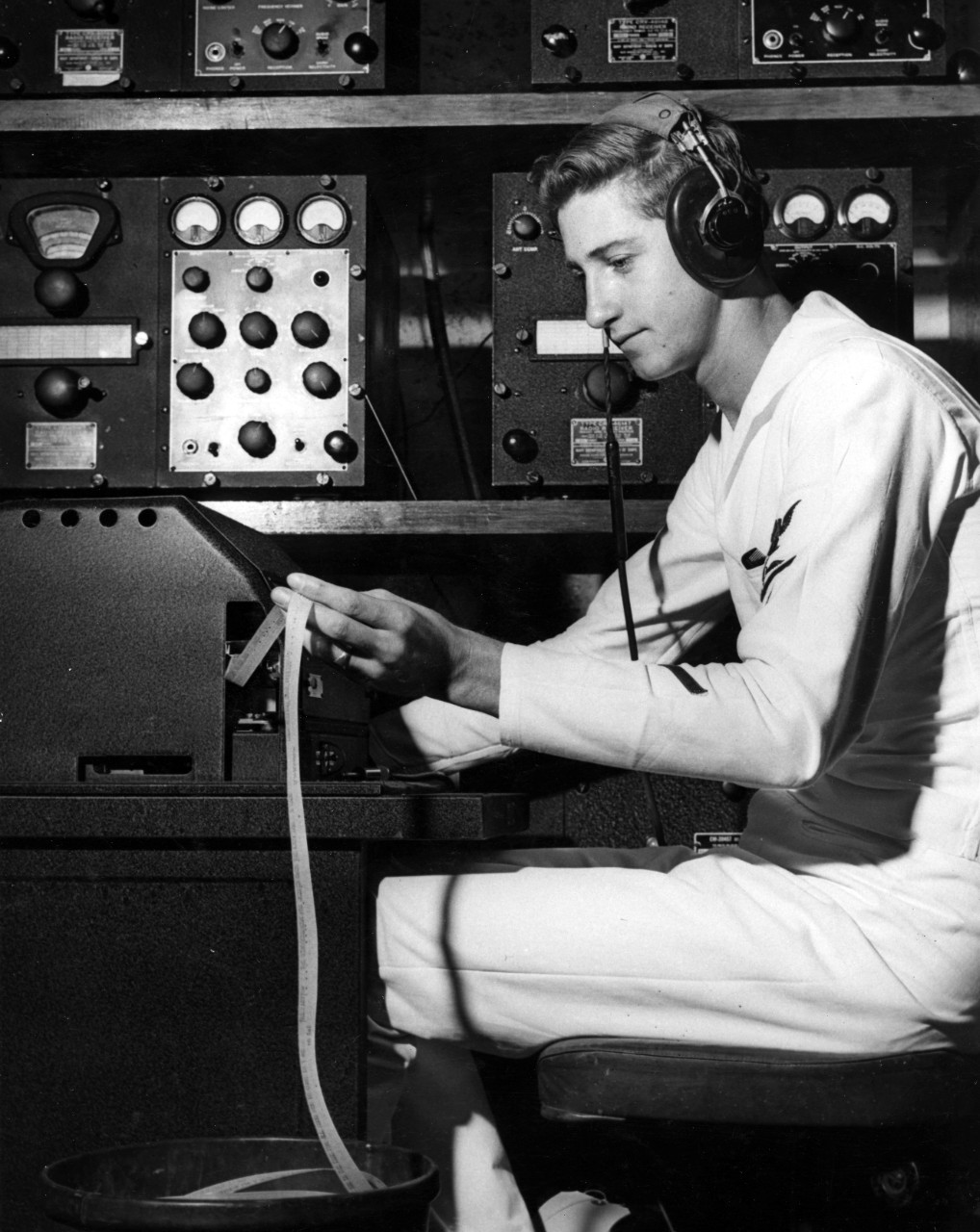
A radioman operating a teletype
These systems not only improved security, they also pointed the way for the future of naval communications. Postwar, the greatly increased volume of message traffic produced by the new electronic command and control systems would require that the message traffic be handled by machines, not people. And even greater changes were looming on the horizon, as mankind reached into space.
1 This isn't a 100% certainty. A phenomenon known as ducting can trap radio waves close to the surface, allowing them to travel hundreds of miles without much attenuation. It was poorly-understood during WWII, and can cause problems even today. ⇑
2 Photo from my collection ⇑
3 This system is often known as Talk Between Ships, but TBS is in fact the systematic Navy radio designation, and Talk Between Ships is a backronym. ⇑

Comments
Another great installment Bean recognizing the work that went behind the development of reliable comm.
I like your mention of: "One other important factor for traffic analysis was the “fist” of the radioman of a specific ship or station. Most messages were still sent by hand, and an experienced listener could tell senders apart."
I had always thought this was an old-wives tale but was set straight a number of years ago by an elderly British gent who was a pilot for BOAC starting in the late 40's. He told me that as the far-flung stations sent out messages one could say, after a while, "Ah, its Charley's (or whomever) shift tonight" as one could recognize the pacing, pauses, etc.
Oh, absolutely. One of my books has a story of Lord Mountbatten, while he was Fleet Wireless Officer in the Med. He had a radio installed in his bathroom in Malta, and would call out people for doing a good job based entirely on their fists and what he heard in the bath.
Why wasn't interception a concern with the TBS system?
I think it was a matter of timing. Being able to listen to the enemy is only useful if you can figure out what he's doing and take action on it. That's hard to do when the bad guy is speaking another language, particularly if he takes actions like using codenames and callsigns, to confuse the issue.
That, and I think the Japanese had fairly bad high-frequency electronics. But it's been a while since I read about that.
TBS was also a very short-range system, basically line-of-sight. So if you couldn't see the enemy, which was most of the war, he was (in theory) not going to be hearing your TBS messages anyway. Of course, radio waves have been known to travel farther than expected...
Also, both sides were known to listen in to the radio chatter from the other side's aircraft. This was one reason (not the only!) for the American success at the Great Marianas Turkey Shoot in 1944; the US fighter direction teams were listening in on the Japanese airborne commander's strike instructions.